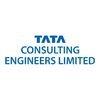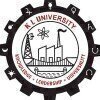MEP Engineer
100+ MEP Engineer Interview Questions and Answers

Asked in SCON Projects

Q. Work method statement of slab conduiting, Plumbing pipe installation, Fire Fighting pipe installation.
A work method statement outlines the procedures and steps involved in slab conduiting, plumbing pipe installation, and fire fighting pipe installation.
Slab conduiting involves the installation of conduits within the concrete slab to accommodate electrical and communication wiring.
Plumbing pipe installation includes the fitting and connection of pipes for water supply and drainage systems.
Fire fighting pipe installation involves the installation of pipes and fittings for fire ...read more
Asked in AMNEAR ENGINEERS

Q. How do you cut a vertical hole for the elevator system in a building?
To cut a vertical hole for the elevator system on a building, the process involves several steps.
Start by conducting a thorough survey of the building to determine the ideal location for the elevator shaft.
Obtain necessary permits and approvals from local authorities before proceeding with any construction work.
Engage a structural engineer to assess the building's structural integrity and provide guidance on the cutting process.
Use specialized cutting equipment, such as diamo...read more
MEP Engineer Interview Questions and Answers for Freshers
Asked in Murali Architects

Q. What are the different types of pipes used in a construction site, and what is their permissible standby pressure?
There are various types of pipes used in construction sites, each with its permissible standby pressure.
Copper pipes: used for water supply and have a permissible standby pressure of 100 psi
PVC pipes: used for drainage and have a permissible standby pressure of 25 psi
Galvanized steel pipes: used for gas supply and have a permissible standby pressure of 500 psi
PEX pipes: used for both water supply and heating systems, with permissible standby pressure varying based on the spec...read more

Asked in TCE

Q. What is Mechanical, Electrical, and Plumbing (MEP)?
Mechanical, Electrical, and Plumbing (MEP) refers to the systems that make buildings functional and comfortable for occupants.
Mechanical systems include heating, ventilation, and air conditioning (HVAC), as well as elevators and escalators.
Electrical systems include power supply, lighting, and communication systems.
Plumbing systems include water supply, drainage, and sewage systems.
MEP engineers design, install, and maintain these systems in buildings to ensure they operate e...read more

Asked in Raymond Lifestyle Limited

Q. What is the difference between earthing and grounding?
Earthing and grounding are terms used interchangeably, but they have different meanings and applications.
Earthing refers to the process of connecting electrical systems to the ground to prevent electric shock and protect against lightning strikes.
Grounding, on the other hand, involves creating a low-resistance path between an electrical circuit and the earth to ensure proper functioning and safety.
Earthing is primarily concerned with safety, while grounding focuses on electri...read more

Asked in Ssnr Projects.pvt.ltd

Q. What's is fire fighting system ? What are the components of HVAC ?
Fire fighting system is a set of equipment and procedures designed to extinguish fires.
Components of HVAC include air handling units, ductwork, fans, filters, and controls.
Fire fighting system components include fire alarms, sprinkler systems, fire extinguishers, and fire hoses.
HVAC systems are designed to regulate temperature, humidity, and air quality in buildings.
Fire fighting systems are crucial for ensuring the safety of occupants and minimizing property damage in case o...read more
MEP Engineer Jobs



Asked in AMNEAR ENGINEERS

Q. How can you insert 2D CAD files into a 3D model?
To insert 2D CAD files in a 3D model, use CAD software that supports importing and converting 2D files to 3D format.
Open the 3D model in CAD software
Locate the 'Import' or 'Insert' option
Select the 2D CAD file to be inserted
Adjust the scale and position of the 2D file within the 3D model
Save the modified 3D model with the inserted 2D CAD file
Asked in Joy Pools

Q. Calculate the volume of water in liters that turns around every 6 hours for a swimming pool that is 40' x 20' and 16' x 32'.
Calculate the volume of water in liters in two swimming pools of different sizes in 6 hours.
Calculate the volume of each pool separately using the formula: length x width x depth
Convert the volume to liters by multiplying with 1000
Multiply the volume by the number of times the water is turned over in 6 hours
Add the volumes of both pools to get the total volume of water in liters
Share interview questions and help millions of jobseekers 🌟


Asked in SCON Projects

Q. How would you design a single-line diagram (SLD) from the HT panel to the meter room in a building?
The Single Line Diagram (SLD) shows the electrical connections from the HT panel to the meter room.
The SLD should include all the electrical components and their interconnections.
It should show the main HT panel, distribution boards, transformers, cables, and meters.
The SLD should indicate the ratings, sizes, and types of equipment used.
It should follow the electrical code and standards applicable to the project.
The SLD helps in understanding the electrical system layout and ...read more
Asked in Murali Architects

Q. What is the difference between STP and WTP?
STP stands for Sewage Treatment Plant and WTP stands for Water Treatment Plant.
STP is used to treat sewage and wastewater before it is discharged into the environment.
WTP is used to treat raw water from natural sources like rivers or lakes to make it safe for drinking and other purposes.
STP involves processes like screening, sedimentation, biological treatment, and disinfection.
WTP involves processes like coagulation, sedimentation, filtration, and disinfection.
STP focuses on...read more

Q. How many light fixtures should be placed in a 150 sq ft study room?
The number of light fixtures needed for a 150 sq ft study room depends on the type of lighting desired and the brightness of the fixtures.
Calculate the total lumens needed for the room based on its size and desired lighting level
Determine the lumen output of the light fixtures you plan to use
Divide the total lumens needed by the lumen output of the fixtures to find the number of fixtures required
Consider factors like fixture placement, room layout, and lighting design prefere...read more

Q. What is the appropriate cable size for connecting a 400KVA transformer to a 400KVA voltage stabilizer?
The size of the cable from a 400KVA transformer to a 400KVA voltage stabilizer will depend on the distance between them and the voltage drop allowed.
The size of the cable will depend on the distance between the transformer and the voltage stabilizer.
Calculate the voltage drop allowed in the system to determine the appropriate cable size.
Consider the type of cable (e.g. copper or aluminum) and the installation conditions when selecting the cable size.

Asked in Almajal Alarabi Holding

Q. Which parameters and control configurations connect with BMS in an AHU unit?
BMS connects various parameters in AHU units for efficient control and monitoring of HVAC systems.
Temperature Sensors: Monitor supply and return air temperatures.
Humidity Sensors: Control humidity levels for comfort and efficiency.
Airflow Sensors: Measure and control airflow rates through the AHU.
Pressure Sensors: Monitor static pressure in ducts to ensure proper airflow.
Control Valves: Regulate water flow in cooling and heating coils.
Variable Frequency Drives (VFDs): Control...read more

Asked in L&T Construction

Q. How do you manage a high-pressure site?
Managing site in high pressure requires effective communication, prioritization, and problem-solving skills.
Establish clear communication channels with team members and stakeholders
Prioritize tasks based on urgency and importance
Anticipate potential problems and have contingency plans in place
Stay calm and focused under pressure
Delegate tasks to capable team members
Maintain a positive attitude and motivate team members
Take breaks and practice self-care to avoid burnout

Asked in VK Building Services

Q. How many leaves are you expected to take per annum?
The number of leaves to be taken per annum depends on company policies and individual circumstances.
The number of leaves may vary depending on the company's leave policy.
Some companies have a fixed number of leaves per annum, while others have a flexible leave policy.
Individual circumstances such as personal health, family commitments, and work-life balance also play a role in determining the number of leaves to be taken.
It is important to strike a balance between taking enou...read more
Asked in My Home India

Q. What is sld How many types of MCB How to select cables as per load What is star connection and delta connection
SLD stands for Single Line Diagram. There are different types of MCBs such as Type B, Type C, and Type D. Cables are selected based on load current, voltage drop, and installation conditions. Star connection and delta connection are two types of three-phase connections.
Single Line Diagram (SLD) is a simplified representation of a power system showing all components and their connections.
Types of MCBs include Type B (for domestic applications), Type C (for commercial applicati...read more

Asked in The BIM Engineers

Q. What is your knowledge of Revit and other Building Information Modeling (BIM) software?
I have extensive knowledge and experience with Revit and other BIM software.
Proficient in creating 3D models, drawings, and schedules using Revit
Experienced in coordinating MEP systems within a BIM environment
Knowledgeable in clash detection and resolution using BIM software
Familiar with Navisworks for project coordination and collaboration

Asked in KPC Projects

Q. I was asked to draw the full Single Line Diagram (SLD) from the generation point to the internal wiring.
SLD illustrates the electrical distribution from generation to internal wiring, detailing components and connections.
Start with the generation point, e.g., a power plant or solar panel.
Include transformers for voltage step-up or step-down.
Show transmission lines connecting to substations.
Detail the distribution board and circuit breakers.
Illustrate internal wiring to various loads like lighting and HVAC.

Asked in Almajal Alarabi Holding

Q. What is the difference between a DOL and a Star Delta starter?
DOL and Star Delta starters are methods for starting three-phase induction motors, differing in starting current and torque characteristics.
DOL (Direct On Line) connects the motor directly to the power supply, providing full voltage immediately.
Star Delta reduces the starting current by initially connecting the motor in a star configuration, then switching to delta.
DOL is simpler and cheaper, suitable for smaller motors (up to 5-10 HP).
Star Delta is used for larger motors (ab...read more

Asked in Almajal Alarabi Holding

Q. What is the difference between an auto transformer starter and a VFD starter?
Auto transformer starters reduce voltage for motor starting, while VFDs control speed and torque electronically.
Auto transformer starters provide reduced voltage during startup, minimizing inrush current.
VFDs (Variable Frequency Drives) allow for precise control of motor speed and torque.
Auto transformers are simpler and less expensive but offer limited control compared to VFDs.
VFDs can improve energy efficiency by adjusting motor speed to match load requirements.
Example: An ...read more

Asked in Almajal Alarabi Holding

Q. What is the maximum transformer capacity you have worked with?
In my experience, I have worked with transformers up to 10 MVA capacity in various projects.
Worked on a project involving a 10 MVA transformer for a commercial building.
Handled installation and maintenance of a 5 MVA transformer in an industrial facility.
Participated in the upgrade of a 3 MVA transformer for a hospital's power supply.

Asked in Voltas

Q. How do you design for firefighting systems?
Designing for firefighting involves incorporating fire safety measures and systems into the building's MEP design.
Include fire suppression systems such as sprinklers and fire extinguishers.
Design proper fire escape routes and exits.
Ensure adequate ventilation and smoke control systems.
Integrate fire alarm and detection systems.
Consider the use of fire-resistant materials and construction techniques.
Provide access for fire trucks and hydrants near the building.
Conduct regular ...read more
Asked in Savronik Sistem

Q. Why is paint red for firefighting equipment?
Red paint is used for firefighting because it is highly visible and indicates the location of fire safety equipment.
Red is a universal color for danger and emergency situations
Red paint makes fire safety equipment easily identifiable in case of an emergency
Red paint is also used for fire hydrants and fire extinguishers
Red color is also used for fire trucks and other emergency vehicles
Asked in Majoris Projects

Q. What is transformer and tell me something about
A transformer is an electrical device that transfers electrical energy from one circuit to another through electromagnetic induction.
Transformers are used to increase or decrease the voltage of an alternating current (AC) power supply.
They consist of two coils of wire, known as the primary and secondary windings, which are wrapped around a magnetic core.
When an AC voltage is applied to the primary winding, it creates a magnetic field that induces a voltage in the secondary wi...read more

Asked in Mace Project and Cost Management

Q. What are the types of venting systems in plumbing?
Types of venting systems in plumbing include wet venting, circuit venting, and stack venting.
Wet venting: Allows for a drain and vent to share the same pipe.
Circuit venting: Connects multiple fixtures to a single vent.
Stack venting: Vertical pipe that extends through the roof to vent multiple fixtures.

Asked in Almajal Alarabi Holding

Q. What is the purpose of booster pumps in a plumbing network?
Booster pumps enhance water pressure in plumbing systems, ensuring adequate flow in high-demand areas.
Compensate for low water pressure in municipal supply.
Ensure consistent water flow in multi-story buildings.
Used in irrigation systems to maintain pressure over long distances.
Commonly found in fire protection systems to meet required pressure standards.

Asked in My Home Constructions

Q. 1.Explain the concept of electrical resistance 2.What is control system?
Electrical resistance is the opposition to the flow of electric current, while a control system manages and regulates processes.
Electrical resistance is measured in ohms (Ω).
Ohm's Law states that V = I × R, where V is voltage, I is current, and R is resistance.
Examples of resistive materials include copper (low resistance) and rubber (high resistance).
Control systems can be open-loop (no feedback) or closed-loop (with feedback).
An example of a control system is a thermostat r...read more

Asked in KPC Projects

Q. What materials are used during slab and wall conduit installation?
Conduit installation in slabs and walls involves various materials and techniques to ensure safety and efficiency.
Conduits: PVC, EMT (Electrical Metallic Tubing), or RMC (Rigid Metal Conduit) are commonly used.
Supports: Conduit straps or hangers are essential for securing conduits to walls or ceilings.
Sealing: Use of sealants or firestop materials to prevent moisture ingress and maintain fire ratings.
Bends: Conduit benders are used to create necessary bends for routing condui...read more
Asked in El Seif Group

Q. What is the refrigeration cycle in HVAC systems?
The refrigeration cycle is a process in HVAC systems that removes heat from a space and transfers it to the outside environment.
The cycle starts with the refrigerant being compressed by a compressor, increasing its temperature and pressure.
The high-pressure, high-temperature refrigerant then flows through a condenser where it releases heat to the surroundings and condenses into a liquid.
The liquid refrigerant then passes through an expansion valve, which reduces its pressure ...read more

Asked in TCE

Q. What is the mechanical component of MEP?
Mechanical in MEP refers to the design, installation, and maintenance of heating, ventilation, and air conditioning (HVAC) systems, plumbing, and fire protection systems.
Mechanical engineering deals with the design and installation of HVAC systems, plumbing, and fire protection systems
Mechanical engineers ensure that these systems are energy-efficient, safe, and meet building codes and regulations
Examples of mechanical systems in MEP include boilers, chillers, pumps, ductwork...read more
Interview Questions of Similar Designations
Interview Experiences of Popular Companies









Reviews
Interviews
Salaries
Users


















